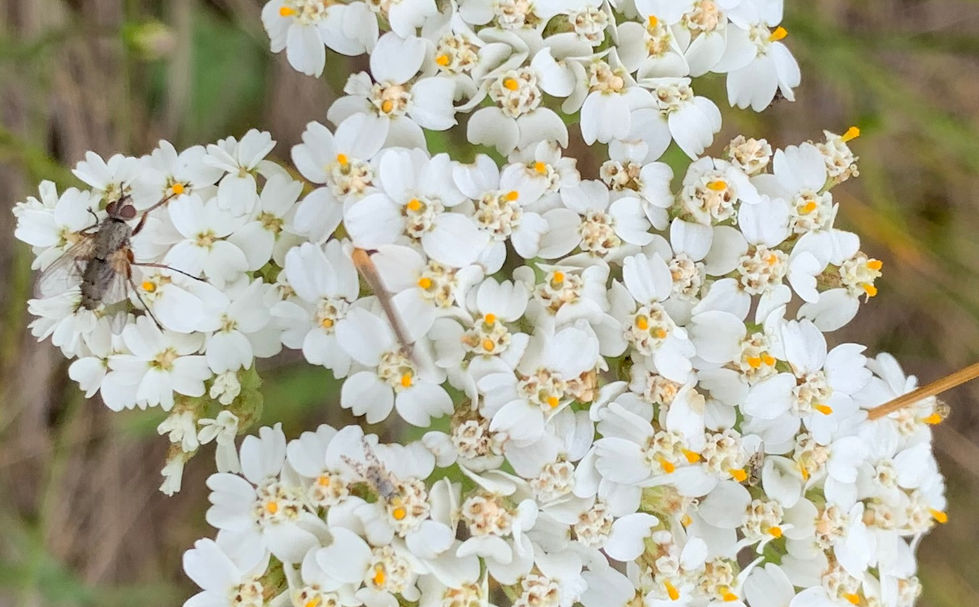Yarrow
Achillea borealis
Family:
Asteraceae
The genus name, Achillea, refers to Achilles, of Greek mythology, who was said to have treated his soldiers' wounds with yarrow.
Meadow / Grassland garden
Pollinator garden
Container garden
Stratify seeds
Drought tolerant
Rabbit resistant
Aggressive plant
Deer resistant
High-value
Late season star
Details
Emerges
June
Seed collection
Flowers
July, August, September
White
August, September, October
Height
30
-
60
cm
Lifecycle
Perennial
Width
30
-
60
cm
Habit
Forbs
Mat-forming
Spreading
Upright
Rhizomatous
Ecology
Supports
Bees
Butterflies & Moths
Beneficial insects
Providing
Pollen source
Nectar source
Is a widely distributed native plant with much going for it. It is drought tolerant, the fresh and dried foliage has a pleasant fragrance.
Habitat
Typically found in
disturbed areas, open woods, meadows, prairie
This yarrow is circumpolar and is the only species within the genus that is native to North America.
In the Garden
Growing Conditions
Moisture
Dry
Average
Moist
Light
Full sun
Soil
Average garden soil, Rocky
Propagation
Via
Rhizomatous
Seeds
Division
Self-seeding
Sowing Recommendations
Direct sow seeds
Spring planting
Fall planting
High or easy germination
Landscape
Use for:
Middle of bed
Mass planting
Groundcover
Naturalization
Growing Tips
Use for groundcover or naturalization.
Contain in small spaces, as it is not a 'good neighbour' plant. Use a large shrub or tree pot buried to the rim.
Alternatively, use deep landscape edging (20 cm) to create a yarrow 'bed'.
Description
There is some ongoing debate in the world of taxonomy about the naming of Achillea, so you may see it named as Achillea borealis in VASCAN, or as Achillea millefolium var. borealis in iNaturalist. A. millefolium is native to Europe and is what you will find at a garden centre, either as a cultivar or listed as a native. It is very likely that any yarrow grown, or that grows wild, in urban areas is either a garden escapee, or a hybridized version of A. borealis. Other than testing at the molecular level, your only clue is that pure A. borealis will have true white rays. A. millefolium tends to have pinkish rays, but that is variable.


